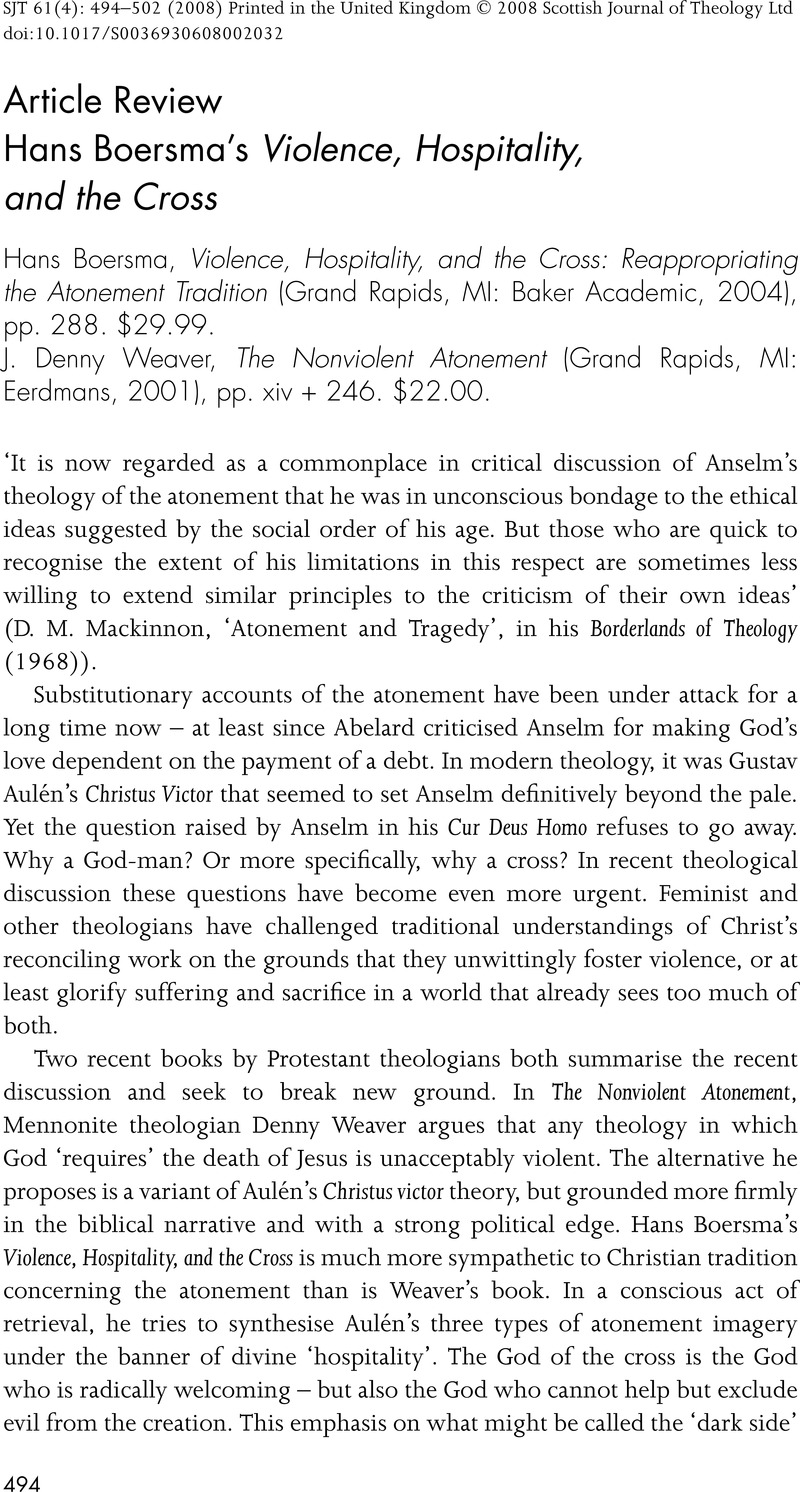No CrossRef data available.
Article contents
Hans Boersma's Violence, Hospitality, and the Cross
Published online by Cambridge University Press: 01 November 2008
Abstract

- Type
- Article Review
- Information
- Copyright
- Copyright © Scottish Journal of Theology Ltd 2008
References
1 In fairness, I should note that Weaver concedes that given a fourth-century worldview, ‘the answers of Nicea and Chalcedon are valid answer, and perhaps the best answers within the assumed categories’ (p. 96). He claims his protest concerns elevating the creeds to the status of a universally recognisable and uncontestable foundation that presumes to transcend all issues of time and historical context’ (ibid.). It is not clear who would be so crazy as to make such a claim.
2 On the relation between atonement theories and narrative see Michael Root, ‘Dying He Lives: Biblical Image, Biblical Narrative and the Redemptive Jesus’, Semeia 30 (1985), pp. 155–169. This brief essay should be required reading for anyone hoping to do constructive work in the theology of the atonement.
3 In contemporary preaching, no one makes this point more forcefully than the Rev. Fleming Rutledge. See e.g. her sermon collection The Undoing of Death: Sermons for Holy Week and Easter (Grand Rapids: Eerdmans, 2002).
4 Root, ‘Dying He Lives’, p. 157.
5 Epistle of Diognetus, IX, Ante-Nicene Fathers, I, 28; cited in Boersma, p. 159.




